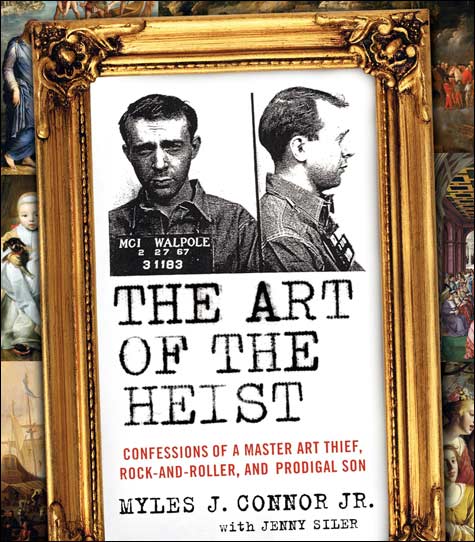
WHAT DOES HE KNOW? America's greatest art thief hasn't coughed up the Gardner loot — yet. |
Myles Connor: Mayflower descendant, Mensa member, master of disguise, black belt in karate, self-styled "President of Rock 'n' Roll." And probably the most notorious art thief in the history of the United States. He's absconded with Tiffany lamps, stolen Andrew Wyeth canvasses, and, in one daring gambit, grabbed a Rembrandt off the wall of the MFA.And the Gardner heist? Connor told investigators that he knew "emphatically and beyond any doubt" who had perpetrated the theft, and that he could help broker the return of the stolen loot. But a massive heart attack in 1998 robbed him of much of his memory, so his ability to help crack the case these days is dubious. That's not to say the loquacious 66-year-old, who has a book, The Art of the Heist: Confessions of a Master Art Thief, Rock-and-Roller, and Prodigal Son (Collins), which he wrote with Jenny Siler, due next month, doesn't still spin a great yarn. Here's some of what they had to say to me.
Why art? Why not be a bank robber, or a petty thief?
MC: Well, I was brought up around art. I was always surrounded by art, so I had an appreciation for art. And early in my years, I learned that museums were vulnerable to being robbed. And then of course, there was the Thomas Crown Affair movie — that kind of romanticized the concept of art theft. And then there was simply the monetary value of these things that could be taken. And it was then that I learned that a profit could be made by acquiring some of these things. And so I guess it was a combination of all of the above.
JS: Myles's father and grandfather were both collectors.
And you were especially drawn to Asian art and weaponry, right?
MC: Yes, yes, that's true.
But paintings were more lucrative.
MC: Yes, yes. Exactly. The paintings, either they were more lucrative, or they were more valuable if they were taken in exchange for forcing the prosecution to capitulate. A Rembrandt would be a lot more valuable an item than, say, a Ming vase or something like that.
JS: Myles is talking about the Rembrandt he stole from the MFA that he used as collateral to bargain his way out of a federal sentence.
Yeah, that's quite a story. Describe how that was pulled off.
MC: Well, I had known that that particular painting was not ensured. It was on loan to the museum. And if it was taken, there'd be a huge hue and cry to get it back, by both the family that owned it and the museum itself. And so initially what prompted me to get the painting was a statement that an FBI agent made to me. I had been grabbed prior, for interstate transportation of other paintings that had been stolen from the Wyeth Estate up in Maine.
JS: They were Wyeth paintings that had been stolen from the Woolworth Estate.
MC: Yes, the Woolworth Estate. But, uh, anyway, the FBI agent, they'd been after me for a while. And the agent said, "We'll get you now, Connor, let's see you get out of this one." And that was like the gauntlet that was thrown down in front of me. When he said that, it was like, "Let's see what you do to get out of this one." And I remember thinking at the time exactly what I was gonna do, which is steal a painting worth several million dollars and bargain my way out of it.
So that was the impetus that set the mechanism in motion as to why I was gonna take the painting. And from there it was simply what to take that was worth a ton of money. And the Rembrandt was the most accessible at the time. There were other paintings in other museums, but that particular painting was the most accessible.
And so I put together a crew, and I went up to the painting, myself and another friend, we wore disguises, and we grabbed the painting off the wall and then came down. Of course, we knew that there would be an alarm posted, not by the painting itself but by the guard that was up there, so of course he yelled out, and when we came down to the front of the museum, we had other people down in the foyer of the museum to intercept any guards that might have interrupted our proceeding down to a van.
JS: One of the really ingenious things about the plan was that at the time the Fenway entrance to the museum, the Fenway was just kind of a swamp, and that whole area had fallen into disarray. And nobody ever used the Fenway exit. And they were able to park their vans right outside the exit, buy tickets, go in, literally just grab the painting off the wall and run off with it.